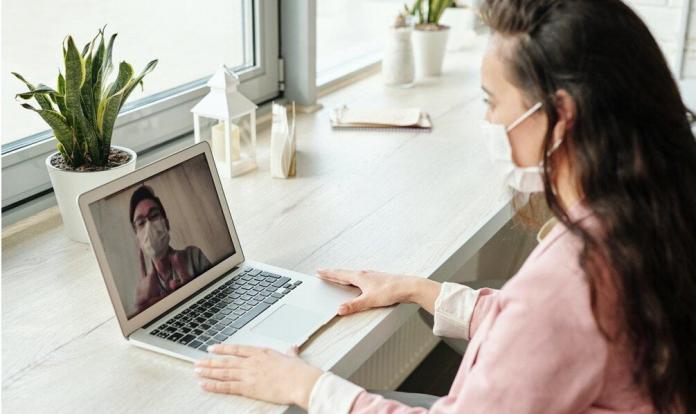Among the most profound positive impacts of our digital landscape has been upon our health. Over the past couple of decades we have seen huge leaps in the use of artificial intelligence (AI) to diagnose illnesses, electronic medical records that improve efficiency, even blockchain has been used in the fight against COVID-19. However, one of the most vital technological developments to gain prominence is telehealth.
While it has existed in some form for much of the past century — indeed, teleradiology has been used for at least 60 years — it has only recently become part of everyday life. Over the past decade or so, video calling and secure document sharing have become increasingly accessible to a larger percentage of the population. This has resulted in a range of telehealth services being not only practical but in many cases preferable to in-person.
So, what aspects of telehealth today can improve your overall wellness?
Access to Care
Perhaps the most important way that telehealth can help to improve your overall health is simply by making care more accessible to you. Too often, people miss out on their regular checkups because they can’t seem to fit them into their busy lives. Or, worse, it’s not affordable to them. By making an increasing range of healthcare services more convenient and affordable, telehealth can ensure you get the regular attention that can help you to maintain your wellness.
This is most evident in the fact that telehealth tends to fit into most people’s lives more effectively. There’s no need to take time off of work or travel long distances to spend an hour in a packed waiting room. Wherever you can find a quiet room with stable internet access you can have a consultation. You aren’t limited to general practitioner services, either — many specialists are starting to engage. Technology has also progressed to the point that even eye exams can be handled via remote appointments using standard browser software. Coupled with secure prescription renewals and next-day delivery, it can make for a more positive and empowering experience. Indeed, the majority of patients have reported that they get the same if not better level of care than they would in person.
We also can’t ignore that the insurance industry has something of a stranglehold on health services. Many companies are including telehealth services in their roster, though some have begun removing it due to the sheer volume of uptake during the COVID-19 pandemic. That said, even paying out-of-pocket for a telehealth appointment tends to be lower-cost than paying for an in-person appointment. Some doctors have started telehealth practices so that they can offer low-cost appointments while bypassing the restrictions of the insurers — helping overall access to wellness.
Technological Tools
When we talk about telehealth today, we often just envisage doctor-patient consultations over video chat. While this certainly makes up a central part of the process, it can also go a lot further. The telemedical landscape today provides digital tools that can significantly improve your overall wellness.
One of the most significant uses is remote patient monitoring. This is a subset of telehealth in which you are fitted with devices that provide information to physicians about your condition — either used for diagnosis or ascertaining your current status. You might be familiar with past forms, such as blood pressure monitors that you’d wear for a day and return them to the surgery to be analyzed. However, thanks in part to the internet of things (IoT), today’s telehealth technology provides real-time feedback on your condition by connecting to apps on your mobile device or computer. This not only gives your medical professional immediate access to data so they can provide you with timely advice, but it also empowers you with the knowledge of your own health so that you can make better-informed lifestyle decisions.
We’re also starting to see more wearable technology being integrated with telehealth services. The efficacy of commonly-owned devices — smartwatches and smartphones — at assessing aspects of your health has improved significantly in recent years. A recent Stanford School of Medicine study found that the Apple watches used in assessments provided positive predictive tachogram values 71% of the time. There are even applications emerging to monitor the potential for depressive episodes on your smartphone. This means that as technology progresses, you will increasingly be able to work with your physician to gain important insights into your health using non-specialist or invasive equipment.
Beyond the Physical
While there is exciting potential for how telehealth can impact your physical health, this is far from the only use. Much of the work over the last several years has gone into creating basic infrastructure for remote consultations and procedures. The standard approach is to provide patients with central online portals through which they can engage in virtual consultations and share data. The fact that a lot of work has also been put into providing these platforms with a high level of security has helped to ensure that even the most sensitive medical reviews can be undertaken securely while maintaining patient confidence. Which is one of the reasons why it is growing in popularity in mental health fields.
Telehealth is allowing users of mental health services to bypass the need to attend in-person consultations they may find anxiety-inducing. Indeed, as stigma is still a reason patients don’t always seek professional help, providing options that don’t always require hospital attendance may help to address this significant hurdle. From a non-clinical perspective, there is also a growing number of remote counseling platforms, some even have a sliding scale of income-based fees to ensure that those who need help can access it. Indeed, particularly during COVID-19, addiction recovery centers have been finding significant success in offering remote access to mental health staff, giving them tools to take responsibility for their illness and manage any crises that arise.
Conclusion
Telehealth has become a more practical and accessible option for patients over the last several years. There is greater scope for general and specialist appointments, not to mention that supportive technology has become more widely adopted for monitoring. Alongside continued use to maintain mental health, the growing infrastructure can provide you with the tools and expertise you need to improve and maintain your overall wellness.








